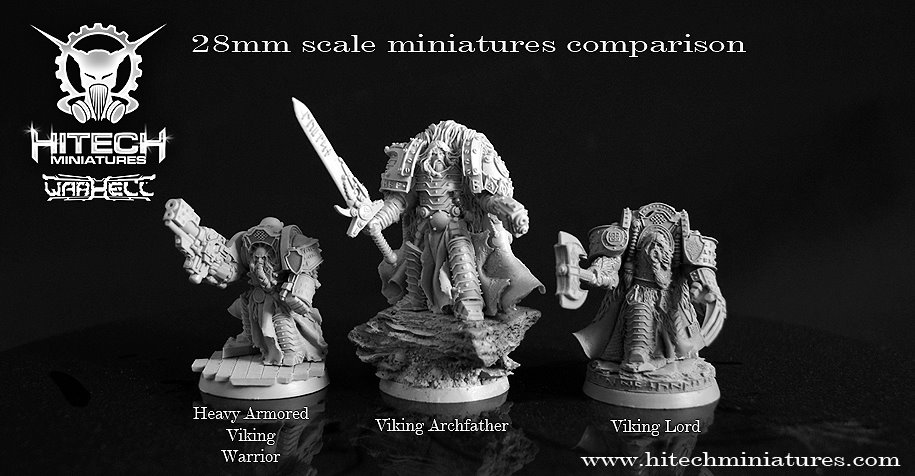
“Why do your 28mm scale figures have different sizes” ?
This is the most frequently and consistently asked question I’ve received over nearly 13 years of creating figures.
Explanation for begginers
Size vs. Scale: Technical Differences
Size and scale are terms that are often confused, especially in the context of modeling and tabletop games. Size refers to the actual dimensions of an object, while scale indicates the proportion by which an object has been reduced or enlarged in comparison to the original. For instance, a 1:100 scale means that every centimeter of the model represents 100 centimeters of the real object.
Consider miniature human figures in a 28 mm scale. This means that an average adult, who is about 180 cm tall, is reduced to a height of 28 mm. However, due to natural variations in human height, one figure might be 28 mm tall, while another could be 32 mm, even though both represent people in the same scale. People vary in height, so figures can also vary, even while maintaining the same scale proportions.
Similarly, a dragon in a 28 mm scale will be significantly larger than a human. If a dragon is 10 meters long in reality, its model in a 28 mm scale would be about 100 mm long. This explains why miniatures in the same scale can have different sizes. Scale dictates proportions, but it doesn’t determine the absolute dimensions of objects.

Diversity in Sci-Fi Worlds: Scaling Characters
When creating miniatures in a sci-fi setting, we can see even greater diversity in character sizes, even if they are in the same scale. In my sculptures, I often incorporate elements of the sci-fi world, such as genetic modifications or access to advanced technology, which can affect the physical appearance of characters.
In a futuristic society, wealthier individuals or those in higher positions may have access to advanced genetic modifiers and special nutrients. These modifications can lead to increased height, physical strength, or endurance, making them physically dominant over others. For example, a high-ranking officer’s figure might be 35 mm tall, while a regular soldier’s figure is 28 mm, even though both are in the same scale.
Another example could involve different races inhabiting the galaxy. In a sci-fi world, where species diversity is common, one humanoid race might be significantly taller than another, impacting the size differences in miniatures. Elite military units could be genetically modified to achieve greater height and better performance, which would also be reflected in their larger models.
In summary, differences in the sizes of miniatures in the same scale arise from both natural biological variations and fictional sci-fi elements that add depth and realism to the depicted world. Understanding these differences allows for a better appreciation of the detail and precision in modeling.
Daniel GRYTZ Gryckiewicz

